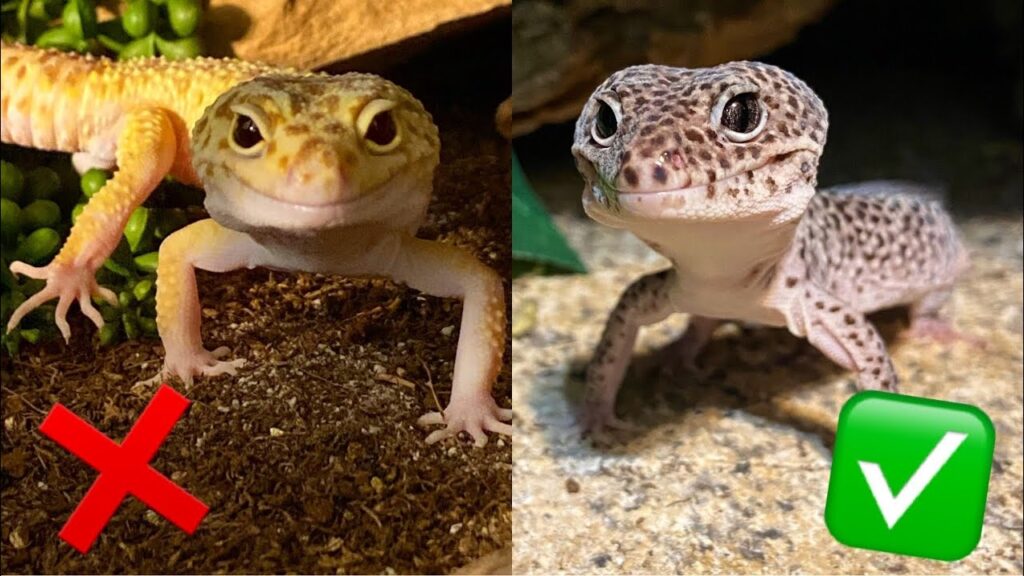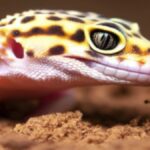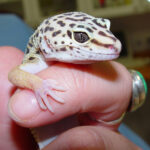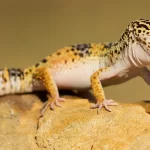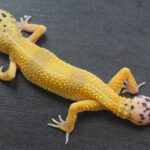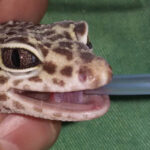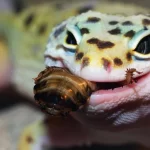Leopard gecko keepers are confronted with many options when it comes to the enclosure substrate/bedding. Some substrates are more desirable than others. Each desirable substrate has its own set of advantages and disadvantages.
The substrate, or bedding, is the material that is on the floor of the Leopard gecko enclosure. There are many types of substrates that can be used for Leopard geckos. Characteristics that need to be considered when choosing a suitable substrate include its purpose, what it looks like, cleanliness and ability to clean, absorbancy, emission of dangerous vapours and digestibility and safety with regards to ingestion. Desired characteristics for Leopard gecko substrates include the ability to be cleaned; being clean, free of odours and aesthetically pleasing (looks pretty); not being able to be ingested, digestible and/or save to ingest.
Commercial reptile or Leopard gecko substrates are available from Amazon.com, most specialised pet shops or over the internet. Some Leopard gecko keepers prefer to collect their own substrates.
Safe substrates for Leopard geckos
Good substrates for Leopard geckos include news- or brown butcher paper, carpet, plastic foam mats, Astroturf, alfalfa/rabbit pellets or maize/cornmeal.
Artificial grass, or Astroturf, is available from nurseries and sometimes specialised pet shops. It looks good on the eye, is fairly easy to clean and are very safe to use. Artificial grass does need a vigorous disinfection strategy, though. Image from allcargos.com.
These substrates are all easy to clean and are considered safe when ingested. The safest, or best, Leopard gecko substrates with regard to ingestion are paper- and carpet-like substrates, but they might have obvious aesthetic disadvantages.
Although aesthetically unpleasing, brown butcher paper works well as a Leopard gecko substrate.
Unsafe substrates for Leopard geckos
Any bedding/substrate consisting of particles or granules (e.g. sand, gravel, maize, pellets, bark, etc.) can be accidentally or purposefully ingested by Leopard geckos and carry the dangers of causing deadly obstructions and impactions. Granular substrates also often supply hiding space for insects such as crickets.
Although sand is naturally found in deserts, these substrates tend to cause various problems when they are used for pet Leopard geckos. Image Simon A. Eugster (CC BY 3.0)
Although various forms of sand are used with great success by Leopard gecko keepers, none of them is 100% safe. Their justification is based on the low probability of being ingested or swallowed based on the size of the lizard and husbandry methods practised.
Leopard gecko hide box substrates
A Leopard gecko hide box should always be available to ensure shelter during the day. By using the correct substrate in hiding boxes, its purpose will extend to being the perfect place for females to deposit their eggs (see below), to increase the humidity and to help with skin shedding. Popular substrates for Leopard gecko hide boxes include pet/sphagnum moss, vermiculite and coir. All three these substrates hold moisture well, are relatively cheap and are easy to obtain.
Dry vermiculite.
Vermiculite can be mixed with an equal volume of water. Sphagnum moss can be wetted excessively and excess water should be manually expressed.
Egg-laying substrates
Hiding boxes also double as egg-laying boxes. To be able to be used as both, they should contain a clean, moist substrate. As mentioned previously, good hiding box substrates include moist peat or sphagnum moss and moist vermiculite.
Below the substrate
To make it easier to remove or replace a substrate, many Bearded dragon keepers use a lining of old newspaper or a sheet of plastic before adding the substrate.
Replacing substrates
As part of good hygiene practices, soiled substrates need to be removed at least once a day. Where granular substrates are used, the affected area can be removed, but where non-granular substrates are used (e.g. carpets or butcher paper) the entire substrate sheet needs to be removed.
One can use an inverted plastic bag over your hand or disposable medical grade gloves instead of bare hands to prevent direct contact with faeces. It is also recommended to remove, clean, disinfect or even sterilise cleanable substrates at least once a week. Also see good hygiene practices for Leopard geckos for more information.

